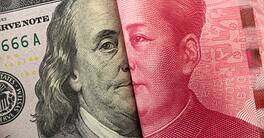Banks come, go, merge and split, but our annual Safest bank ratings provide a consistent measure of bank stability. Read ahead to find out the top 50 global banks and other rankings.
Click here for World’s Safest Banks 2018
Story updated on November 9, 2017
At a time of unprecedented concern about the security of financial systems, the Global Finance annual ranking of the World’s Safest Banks provides a guide that is both consistent and transparent.
We use long-term foreign currency deposit ratings (or an equivalent, if a deposit rating is not available) from all three of the major international credit rating agencies. These ratings are publicly available, as are any changes made to them. In addition, we factor in asset size, as that has historically correlated with stability. This is our 26th consecutive year publishing this analysis, giving us a long-term perspective on bank safety.
The World’s Safest Banks 2017
- World’s Top 50 Safest European Banks
- World’s Top 50 Safest Banks In Middle East 2017
- World’s Top 50 Emerging Market Banks 2017
- World’s Top 50 Safest Commercial Banks 2017
- World’s Safest Banks 2017 | Country Winners
- Safest Islamic Banks In The GCC 2017
- Biggest Emerging Market Banks 2017
- Safest Banks Over The Last 10 Years
Of course, the reputation of the rating agencies has suffered as a result of the global financial crisis of 2008, when it became clear the agencies had awarded exceptionally high ratings on banks that later had to be rescued by their governments or sold to healthier rivals. But much has changed over the past 10 years, in terms of both the strength of the rating agencies’ methodologies and the transparency with which they go about their work.
To mitigate the danger that one agency might have an overly optimistic or pessimistic view on a bank, we make it a criterion for inclusion in our Global and Regional lists that banks hold ratings from at least two of the threeagencies. For example, following the halving of oil prices in 2014, S&P has been the most bearish on Saudi Arabia, downgrading many banks by three notches. In contrast, Moody’s has been more sanguine, usually downgrading by only one notch.
| Global Top 50 | ||||||||
|---|---|---|---|---|---|---|---|---|
| Rank | Group Name | Country | Ratings | Total Score | Assets$ mn | StatementDate | ||
| Fitch | Moody’s | S&P | ||||||
| 1 | KfW | Germany | AAA | Aaa | AAA | 30 | 534,429 | 12/31/16 |
| 2 | Zürcher Kantonalbank | Switzerland | AAA | Aaa | AAA | 30 | 155,222 | 12/31/16 |
| 3 | Landwirtschaftliche Rentenbank | Germany | AAA | Aaa | AAA | 30 | 100,185 | 12/31/16 |
| 4 | L-Bank | Germany | AAA | Aaa | AAA | 30 | 79,010 | 12/31/16 |
| 5 | Bank Nederlandse Gemeenten | Netherlands | AA+ | Aaa | AAA | 29 | 162,327 | 12/31/16 |
| 6 | Nederlandse Waterschapsbank | Netherlands | N/R | Aaa | AAA | 29 | 109,063 | 6/30/16 |
| 7 | NRW.BANK | Germany | AAA | Aa1 | AA- | 26 | 148,105 | 12/31/16 |
| 8 | Banque et Caisse d’Épargne de l’État | Luxembourg | N/R | Aa2 | AA+ | 24.5 | 50,058 | 6/30/16 |
| 9 | Caisse des Dépôts et Consignations | France | AA | Aa2 | AA | 24 | 175,428 | 12/31/16 |
| 10 | DZ Bank | Germany | AA- | Aa1 | AA- | 23 | 536,995 | 12/31/16 |
| 11 | DBS | Singapore | AA- | Aa1 | AA- | 23 | 332,967 | 12/31/16 |
| 12 | Svenska Handelsbanken | Sweden | AA | Aa2 | AA- | 23 | 289,949 | 12/31/16 |
| 13 | Oversea-Chinese Banking Corp | Singapore | AA- | Aa1 | AA- | 23 | 283,402 | 12/31/16 |
| 14 | United Overseas Bank | Singapore | AA- | Aa1 | AA- | 23 | 235,102 | 12/31/16 |
| 15 | Korea Development Bank | South Korea | AA- | Aa2 | AA | 23 | 225,766 | 12/31/16 |
| 16 | Export-Import Bank of Korea | South Korea | AA- | Aa2 | AA | 23 | 74,820 | 12/31/16 |
| 17 | Banque Cantonale Vaudoise | Switzerland | N/R | Aa2 | AA | 23 | 45,932 | 6/30/16 |
| 18 | Deutsche Apotheker- und Ärztebank | Germany | AA- | Aa1 | AA- | 23 | 40,661 | 12/31/16 |
| 19 | TD Bank | Canada | AA- | Aa2 | AA- | 22 | 878,137 | 10/31/16 |
| 20 | Industrial Bank of Korea | South Korea | AA- | Aa2 | AA- | 22 | 212,537 | 12/31/16 |
| 21 | SFIL (formerly Société de financement local) | France | AA- | Aa3 | AA | 22 | 83,708 | 6/30/16 |
| 22 | Pictet & Cie | Switzerland | AA- | Aa2 | N/R | 21.5 | 34,092 | 12/31/16 |
| 23 | Royal Bank of Canada | Canada | AA | A1 | AA- | 21 | 880,592 | 10/31/16 |
| 24 | Rabobank | Netherlands | AA- | Aa2 | A+ | 21 | 698,422 | 12/31/16 |
| 25 | ANZ Group | Australia | AA- | Aa3 | AA- | 21 | 698,054 | 9/30/16 |
| 26 | Commonwealth Bank of Australia | Australia | AA- | Aa3 | AA- | 21 | 692,914 | 6/30/16 |
| 27 | Nordea | Sweden | AA- | Aa3 | AA- | 21 | 648,950 | 12/31/16 |
| 28 | Westpac | Australia | AA- | Aa3 | AA- | 21 | 640,319 | 9/30/16 |
| 29 | National Australia Bank | Australia | AA- | Aa3 | AA- | 21 | 593,333 | 9/30/16 |
| 30 | Swedbank | Sweden | AA- | Aa3 | AA- | 21 | 237,713 | 12/31/16 |
| 31 | First Abu Dhabi Bank | UAE | AA- | Aa3 | AA- | 21 | 185,799 | 12/31/16 |
| 32 | Hang Seng Bank | Hong Kong | A+ | Aa2 | AA- | 21 | 177,617 | 12/31/16 |
| 33 | AgriBank | United States | AA- | Aa3 | AA- | 21 | 102,563 | 12/31/16 |
| 34 | Fédération des Caisses Desjardins | Canada | AA- | Aa2 | A+ | 21 | 100,289 | 12/31/16 |
| 35 | Sparkassen-Finanzgruppe (Sparkassen) | Germany | A+ | Aa2 | N/R | 20 | 1,246,015 | 12/31/16 |
| 36 | U.S. Bancorp | United States | AA | A1 | A+ | 20 | 445,964 | 12/31/16 |
| 37 | SEB | Sweden | AA- | Aa3 | A+ | 20 | 289,184 | 12/31/16 |
| 38 | DNB | Norway | N/R | Aa2 | A+ | 20 | 281,136 | 9/30/16 |
| 39 | HSBC France | France | AA- | A1 | AA- | 20 | 178,584 | 12/31/16 |
| 40 | CoBank | United States | AA- | N/R | AA- | 20 | 126,131 | 12/31/16 |
| 41 | National Bank of Kuwait | Kuwait | AA- | Aa3 | A+ | 20 | 79,073 | 12/31/16 |
| 42 | OP Corporate Bank | Finland | N/R | Aa3 | AA- | 20 | 65,256 | 9/30/16 |
| 43 | AgFirst | United States | AA- | N/R | AA- | 20 | 32,058 | 12/31/16 |
| 44 | LGT Bank | Liechtenstein | N/R | Aa2 | A+ | 20 | 29,079 | 12/31/16 |
| 45 | Farm Credit Bank of Texas | United States | AA- | Aa3 | N/R | 20 | 21,222 | 12/31/16 |
| 46 | Bank für Sozialwirtschaft | Germany | AA- | N/R | AA- | 20 | 8,982 | 12/31/16 |
| 47 | China Development Bank Corporation | China | A+ | A1 | AA- | 19 | 1,943,930 | 12/31/16 |
| 48 | Scotiabank | Canada | AA- | A1 | A+ | 19 | 668,706 | 10/31/16 |
| 49 | Agricultural Development Bank of China | China | A+ | A1 | AA- | 19 | 644,401 | 12/31/16 |
| 50 | Bank of Montreal | Canada | AA- | A1 | A+ | 19 | 513,269 | 10/31/16 |
| Fitch Ratings / Standard & Poor’s |
Moody’s |
|---|---|
| AAA | Aaa |
| AA+ | Aa1 |
| AA | Aa2 |
| AA- | Aa3 |
| A+ | A1 |
| A | A2 |
| A- | A3 |
The rankings that we publish are valid as of a specific date. This year it was July 31. Unavoidably, there is a gap between the day on which we finalize our rankings and the day when they are published in the magazine (although we can post them on our website more quickly). And of course, ratings can change during that time.
| METHODOLOGY |
|---|
| BEHIND THE RANKINGSOur ratings apply to the world’s largest 500 banks by asset size. We calculate the rankings based on the long-term foreign currency ratings issued by Fitch Ratings, Standard & Poor’s and Moody’s Investors Service. Where possible, ratings on holding companies rather than operating companies were used, and banks that are wholly owned by other banks were omitted. Within each rank set, banks are organized according to asset size based on data for the most recent annual reporting period provided by Fitch Solutions and Moody’s. Ratings are reproduced with permission from the three rating agencies, with all rights reserved. A rating is not a recommendation to purchase, sell or hold a security, and it does not comment on market price or suitability for a particular investor. All ratings in the tables were valid as of July 31, 2017. |
This year, S&P downgraded the People’s Republic of China by one notch to A+ on September 21. On the same day, several of the large Chinese banks were also downgraded by one notch. China Development Bank Corporation (47th) and Agricultural Development Bank of China (49th) would not have been included in the Global Top 50 Safest Banks if that downgrade had occurred before July 31.
Along with Export-Import Bank of China, both those Chinese banks are among the top 10 Safest Emerging-Market Banks. After the downgrade, all three would have retained very high positions on that list.
Another highly rated casualty has been Qatar. On August 28, Fitch downgraded the Government of Qatar by one notch, to AA-. Downgrades of some of the banks followed.
Qatar National Bank had already lost its chance for inclusion in the Global Top 50 Safest following a downgrade by S&P in June, but it remains highly placed in the Emerging-Markets list and would have kept its place in the Safest Commercial Bank ranking even after the Fitch downgrade in August.
In practice, the time lag between closing the rankings and publication has little impact on the overall picture. State-sponsored European banks lead the Global rankings, with South Koreans making a strong showing and Australian, Canadian and Singaporean banks alongside a variety of US banks making the top 50. Banks from the GCC dominate the Emerging-Markets list, accompanied by banks from a select group of Asian countries, such as South Korea, China and Taiwan. European banks are the largest contingent in the Commercial Banks list, although Canadian, Australian, Singaporean and US banks also feature strongly.
From Latin America, only Chilean banks have ratings high enough to make the Global, Emerging Markets or Commercial lists, but even the largest Chilean bank isn’t large enough to make the asset cut-off for the Global list. Similarly, from Eastern Europe, only Czech Republic banks are even contenders.
That leaves many of the world’s biggest banking systems struggling for visibility. Russian, Turkish, Brazilian, Indian and Indonesian banks, even when they have the assets to vie with big players, still fall far short of the ratings needed to compete among the world’s strongest. And for those that can’t compete in the global leagues, our Country-by-Country list gives an indication of how the banks’ security in 106 different countries compares relative to their domestic peers.
First published on September 22, 2017
World’s Safest Banks 2017 Rankings Released

In addition to the safest banks in the world, the full survey also released rankings like that for world’s safest banks by country, world’s 50 safest commercial banks, 50 safest banks in emerging markets, safest Islamic financial institutions in the Gulf Cooperation Council (GCC), and safest banks by region (Africa, Asia, Australasia, Central & Eastern Europe, Western Europe, Middle East, Latin America and North America ). A full list of the press releases for the awards with limited information can be found in the table below.
FULL LIST: PRESS RELEASES
- World’s 50 Safest Banks 2017
- Safest Banks By Country 2017
- 50 Safest Commercial Banks 2017
- 50 Safest Banks In Emerging Markets 2017
- Safest Islamic Financial Instituions in the GCC
REGIONAL WINNERS
- Safest Banks In Africa 2017
- Safest Banks In Asia 2017
- Safest Banks In Australasia 2017
- Safest Banks In Central And Eastern Europe 2017
- Safest Banks In Western Europe 2017
- Safest Banks In Latin America 2017
- Safest Banks In The Middle East 2017
- Safest Banks In North America 2017
Andrew Cunnigham, founder and director of UK based Darien Analytics and consultant to the International Finance Corporation (IFC) has been preparing the ranking for the magazine since 2011. He informed that the banks this year had to have assets of $14 bn or more to be considered eligible for being ranked among the world’s top safest 50 banks. They also needed to get three A1 ratings from the rating agencies mentioned above. Cunnigham mentioned that some of the highlights for this year’s list included downgrades for “some of the Canadian, Australian and big Chinese banks where as upgrates were more of a bank by bank story.” The full rankings and their details will be released in the November issue of the Global Finance magazine. The safest banks will be presented awards at a special ceremony to be held during the annual meetings of the IMF and World Bank in Washington, DC on October 14 at the National Press Club.
Key Highlights
Some of the key highlights from this year’s ranking for world’s 50 safest banks included the domination of the list by European banks. They took all top 10 positions. German banks were especially strong taking five spots on the top 10 list. Also, Germany’s KfW came in at the top spot for the sixth year in a row.
Asian banks too put in a strong showing in the top 20 led by Singapore’s DBS Bank at #11. Singapore’s OCBC and United Overseas Bank came in at number 13 and 14 respectively. Korea’s Korea Development Bank and Export-Import Bank of Korea took positions 15 and 16 repsectively. In the Middle East, First Abu Dhabi Bank became the top ranking bank in the UAE after National Bank of Abu Dhabi’ merged with First Gulf Bank. First Abu Dhabi had assets of $186 billion at the end of March 2017.
Among the new entries to the safest banks list this year include AgFirst and Farm Credit Bank of Texas at #43 and #45, LGT Bank from Liechtenstein at #44 and Bank für Sozialwirtschaft from Germany at #4.
The video below presents a quick look at the methodology used and some other key highlights from this year’s rankings.



